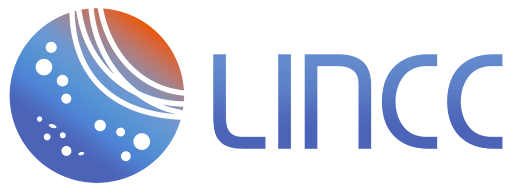Demonstration prepared for the ADASS 2024 conference, Valletta, 2024. This demo showcases working with HATS-partitioned survey catalogs via LSDB, and time domain analysis with nested-dask.
- Slide deck
- Abstract on ADASS website
- LSDB (on GitHub) (on ReadTheDocs)
- HATS (on GitHub) (on ReadTheDocs)
- nested-dask (on GitHub) (on ReadTheDocs)
- nested-pandas (on GitHub) (on ReadTheDocs)
You can follow along with this demo by creating your own local environment.
If installing in your own hardware, create a virtual environment and install the relevant packages:
>> conda create --name lincc python=3.12
>> conda activate lincc
>> pip install lsdb pyvo ipyaladin cesium scikit-learn aiohttp
In this notebook we will learn how to:
- Load object and source catalogs (lazily)
- Perform crossmatching with existing
LSDBcatalogs - Save the results of a science workflow to disk
In this notebook we will learn how to:
- Query and filter catalog data
- Compute time-series features for LSDB catalogs using
nested-dask - Plot light curves and periodograms
In this notebook we will learn how to:
- Use VizieR TAP query to access tables and store/handle them in
LSDB - Use those catalogs to perform crossmatching with existing
LSDBcatalogs - Perform time-series analysis and exploration with
nested-dask
Watch the following LINCC Tech Talk to learn more about LSDB. Other relevant talks can be found in the LSST Discovery Alliance website.
This project is supported by Schmidt Sciences.
This project is based upon work supported by the National Science Foundation under Grant No. AST-2003196.
This project acknowledges support from the DIRAC Institute in the Department of Astronomy at the University of Washington. The DIRAC Institute is supported through generous gifts from the Charles and Lisa Simonyi Fund for Arts and Sciences, and the Washington Research Foundation.

